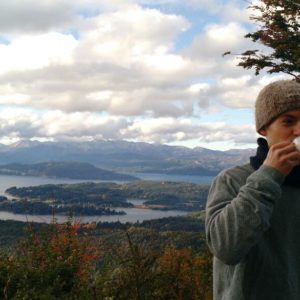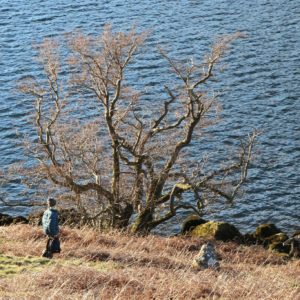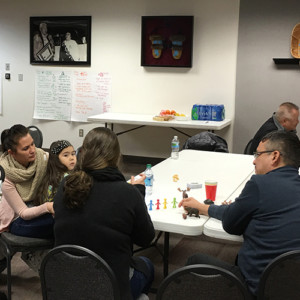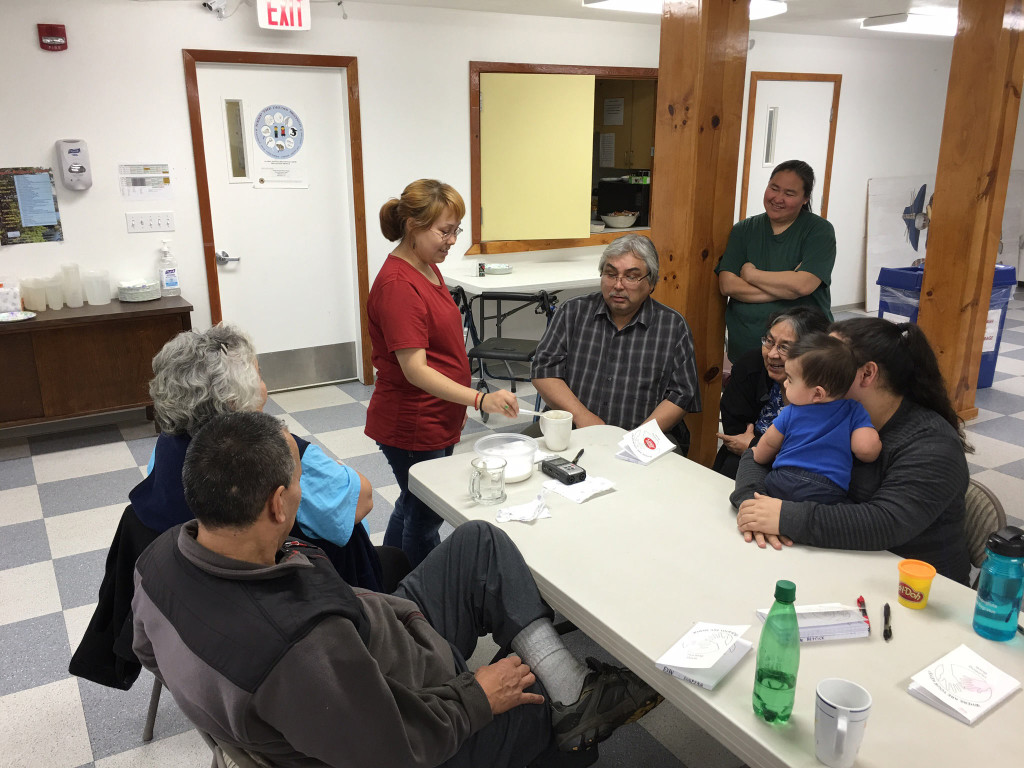
The WAYK team made our first trip to Port Graham, Alaska in May of 2015. During a five-day workshop we introduced Port Graham’s Sugt’stun speakers, learners, and teachers to basic Where Are Your Keys? techniques. This October, WAYK returned to Port Graham for an additional two weeks to focus on building individual fluency through the habit of regular visits in the language.
The community of Port Graham is now in the third and final year of their current language revitalization project, funded by an ANA grant. For these two weeks their project coordinator, Rita Meganack, helped us create a language-packed schedule for all of the speakers and learners. The intention was to support any existing scheduled visits and create new opportunities for building the habit of language visits. Rita did an incredible job of getting participants to commit to sessions, making sure that everyone was included, and making sure that we had a good mix of learners and speakers in each session. The enormous effort that went into preparing this schedule made our time in the village much more effective and efficient.
[gview file=”http://whereareyourkeys.org/wp-content/uploads/2015/02/Schedule-WAYK.pdf”]
As you can see, Rita’s schedule arranged for learners and speakers to get together four times each day. Each session was two to three hours long, and the participants varied from session to session. We like having a rotation for the learners and speakers both because it’s good for people to get a chance to work with everyone else on the team and because we don’t want to overwhelm any of the speakers or learners—everyone needs a break! It also helps to have at least two speakers and two learners in each session. You’ll notice we varied the locations of our meet ups between visits to speakers’ homes and visits in the community center (which also happens to be the bingo hall, tribal offices, and post office).
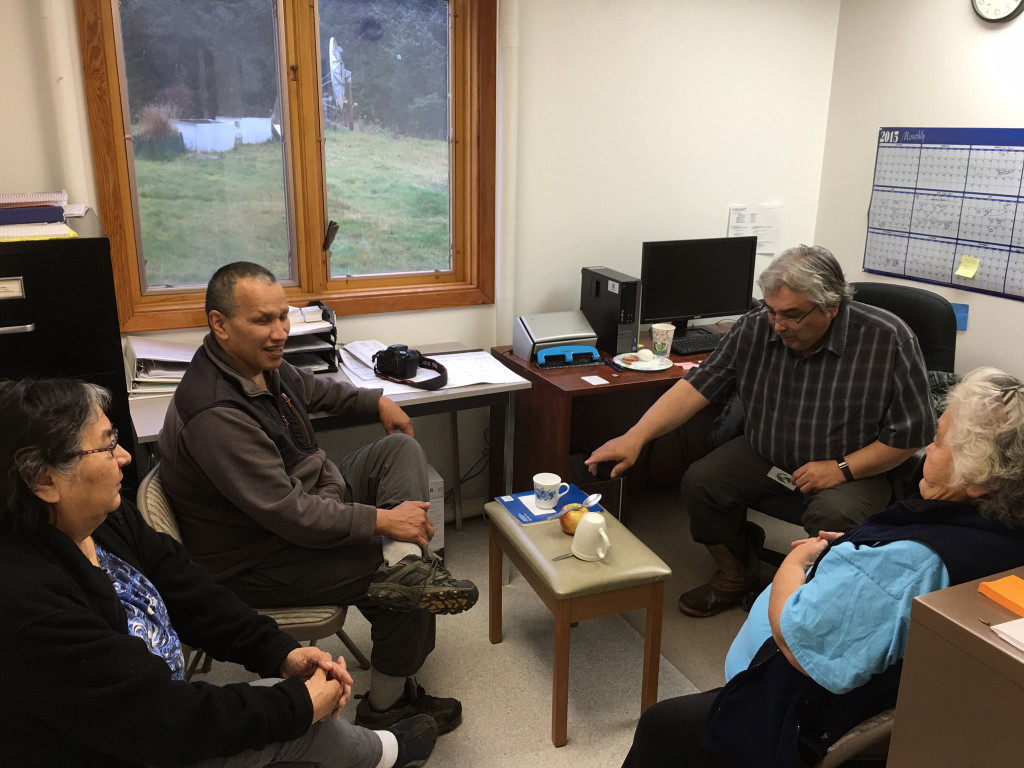
In order to give each session a structure, we always began by reviewing the WAYK “hunting permit,” a checklist designed to prepare learners for a hunting visit. We also assigned one participant to be in charge of the stopwatch, so we could track how much time we spent speaking in Sugt’stun. At the end of each session we filled in our hunting books with notes and debriefed the session. During the sessions themselves, we urged the students and the speakers to use a few crucial techniques consistently: Three Times, Louder (so the fluent speakers could actually hear the learners!), and Send It Around. By the end of the two weeks, the speakers reported that they were feeling much more comfortable using the techniques!
The Port Graham team already has a solid K-12 curriculum that they are using in their classes at the village’s school. However, the whole team is in agreement about their next step: building an adult curriculum to support parents of children who are learning Sugt’stun in school. Although this is a project that will be fleshed out in the weeks and months to come, we spent the last few days of our visit creating a “skeleton” curriculum based on familiar children’s songs which have already been created and recorded.
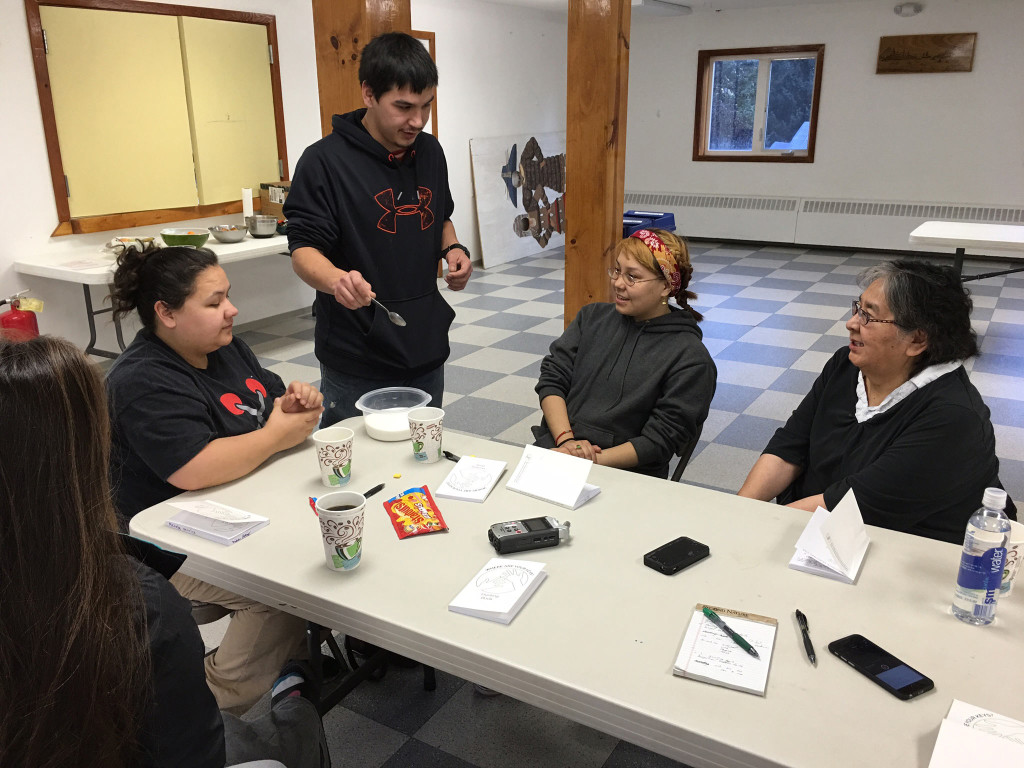
In thinking about this curriculum framework, we tried to emphasize the importance of doing as much as you can with what you already have, instead of creating/translating and recording new songs. The Port Graham team was on board. We spent some time sorting through songs to look for familiar words and think about the grammatical complexity of the structures in the songs. Then we arranged a few of the songs in order, from easiest to more difficult. Of those, we looked at a handful of songs and thought about what lessons would be needed to get a new student to understand the song from a Sugt’stun perspective instead of translating the song to English. This was only a start, but we hope to work further on developing lessons for an adult curriculum on our next visit to Port Graham!
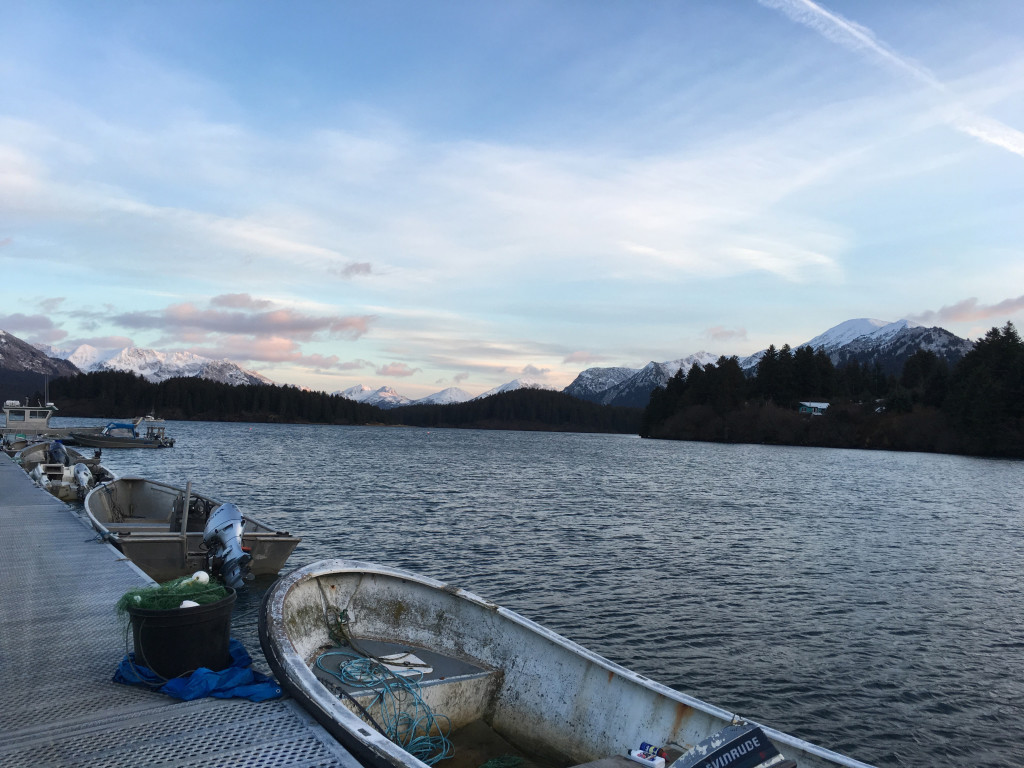
Thank you to Rita Meganack, Pat Norman, all of the Sugt’stun speakers and learners, the visitors from Nanwalek, and the entire Port Graham community for their support of this language project! Keep the stopwatch running, Port Graham!
Be sure to visit our Events page to see where WAYK is traveling next!
Also, check out Port Graham’s language project newsletter to see feedback from the Sugt’stun learners and speakers!
[gview file=”http://whereareyourkeys.org/wp-content/uploads/2016/01/Newsletter.pdf”]

